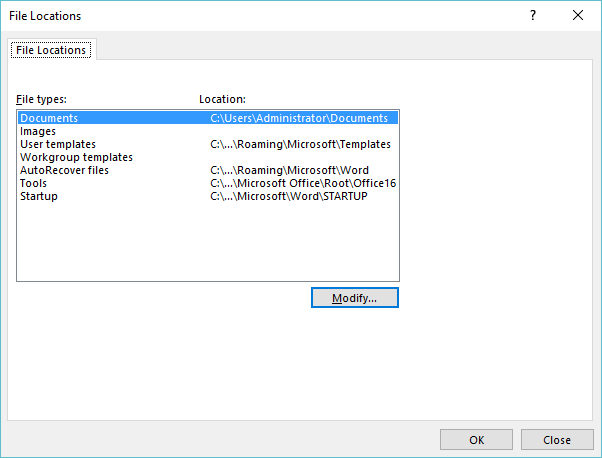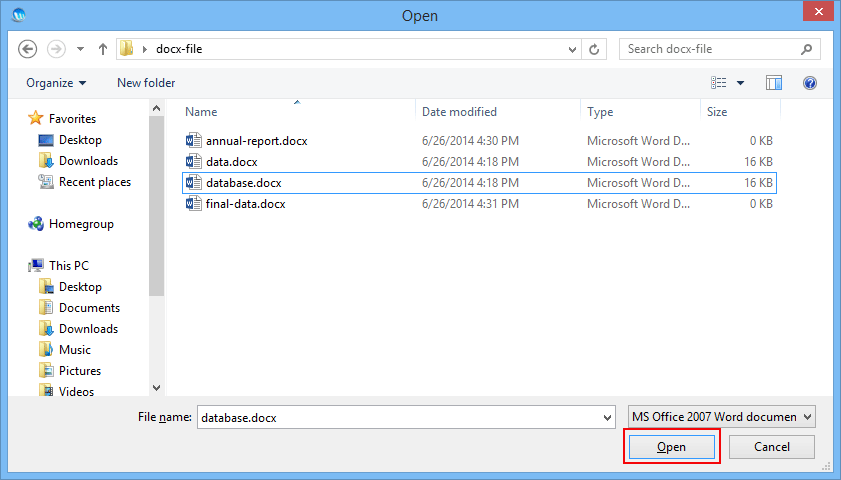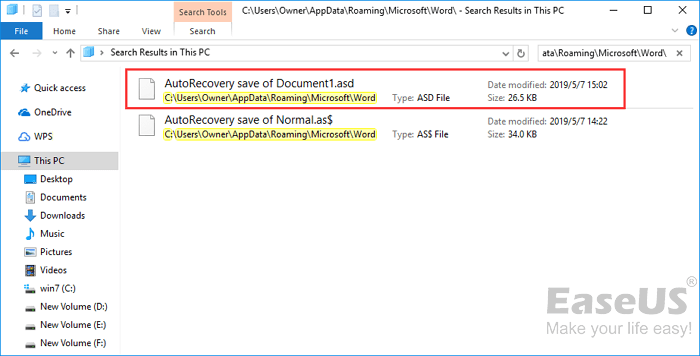

- MICROSOFT WORD FILE LOCATION WINDOWS 7 HOW TO
- MICROSOFT WORD FILE LOCATION WINDOWS 7 FULL
- MICROSOFT WORD FILE LOCATION WINDOWS 7 SOFTWARE
- MICROSOFT WORD FILE LOCATION WINDOWS 7 CODE

If not, do not try to retrieve the word temp file, you need to get the lost or deleted Word documents back directly. If you’re lucky, you can find temporary word files in windows 10, Windows 7, and Windows 11 easily.
MICROSOFT WORD FILE LOCATION WINDOWS 7 HOW TO
Here are the steps: How to Find Temporary Word Files After then, you can find temporary files in Word.
MICROSOFT WORD FILE LOCATION WINDOWS 7 FULL
You can make full use of the search feature in Windows to find them. Actually, temp files are on your computer.

MICROSOFT WORD FILE LOCATION WINDOWS 7 SOFTWARE
To be honest, I knew files were there only when I try the software to clean my computer.

Where is the Word temporary files location in Windows 11/10/7? To find temp Word files, please find where it is. How to Restore Word File from Temp Manually Frequently Asked Questions Related to Word Temporary Recovery Part 1. How to Retrieve Word File from Computer Effectively Part 4. Find Word Temporary Files by Using 'Recover Unsaved Documents' Part 3. How to Restore Word Document from Temp by Searching for Temporary Files Part 2. Here in the following, we're going to talk about how to find word files from a temp in case you encounter a similar situation. The Word temporary files can be in different file extensions, like. It is very helpful for recovering Word doc. Whenever this is an abrupt shutdown or power off, the temp file will be saved automatically. Temporary files contain all the information you're editing on a Word doc. Otherwise, click “Save” to save the file and close the dialog box.Updated to Windows File Recovery Tips by Potter on Jan 28, 2022 If you don’t want to save the file at this time, click “Cancel” to close the dialog box. The full path displays and is highlighted, allowing you to copy the path, if desired. To see the full path, click in the address bar. The path to the location of the currently open file displays in the address bar at the top of the “Save As” dialog box. Under “Computer” on the right side of the backstage screen, either select the “Current Folder,” a folder under “Recent Folders,” or click the “Browse” button at the bottom of the list. On the “Save As” screen, click “Computer.” On the backstage screen, click “Save As” in the list of items on the left. On the right side of the “Open” screen is a list of “Recent Documents.” The path for each file is listed under the file name and can be copied by right-clicking on the file name or path for a file and selecting “Copy path to clipboard” from the popup menu.įinally, you can also use the “Save As” command to find out the path of the currently open file. You can also access a list of recently opened documents by clicking “Open” in the list of items on the left side of the backstage, or start, screen.
MICROSOFT WORD FILE LOCATION WINDOWS 7 CODE
The “%20” is the Unicode equivalent of a space and this code is inserted everywhere there is a space in the copied path.Īlso, in the bottom-right corner of the “Info” screen is the option to “Open File Location.” If you move your mouse over “Open File Location,” the full path to the currently open file displays in a popup.Ĭlicking on “Open File Location” opens a Windows Explorer window directly to the folder containing the file.Įarlier in this article we mentioned finding the location of a file using the “Recent” list when you open Word (without opening a file). Note that when you copy the path from this location, it pastes differently when pasted elsewhere, such as into Notepad, as shown below.įile:///C:\Users\Lori\Google%20Drive\HTGArticles\How%20to%20Find%20Locations%20of%20Files%20in%20Word%202013.docx You can copy the path from this location, as well, by left-clicking on the path (not right-clicking) and selecting “Copy link to clipboard” from the popup menu.


 0 kommentar(er)
0 kommentar(er)
